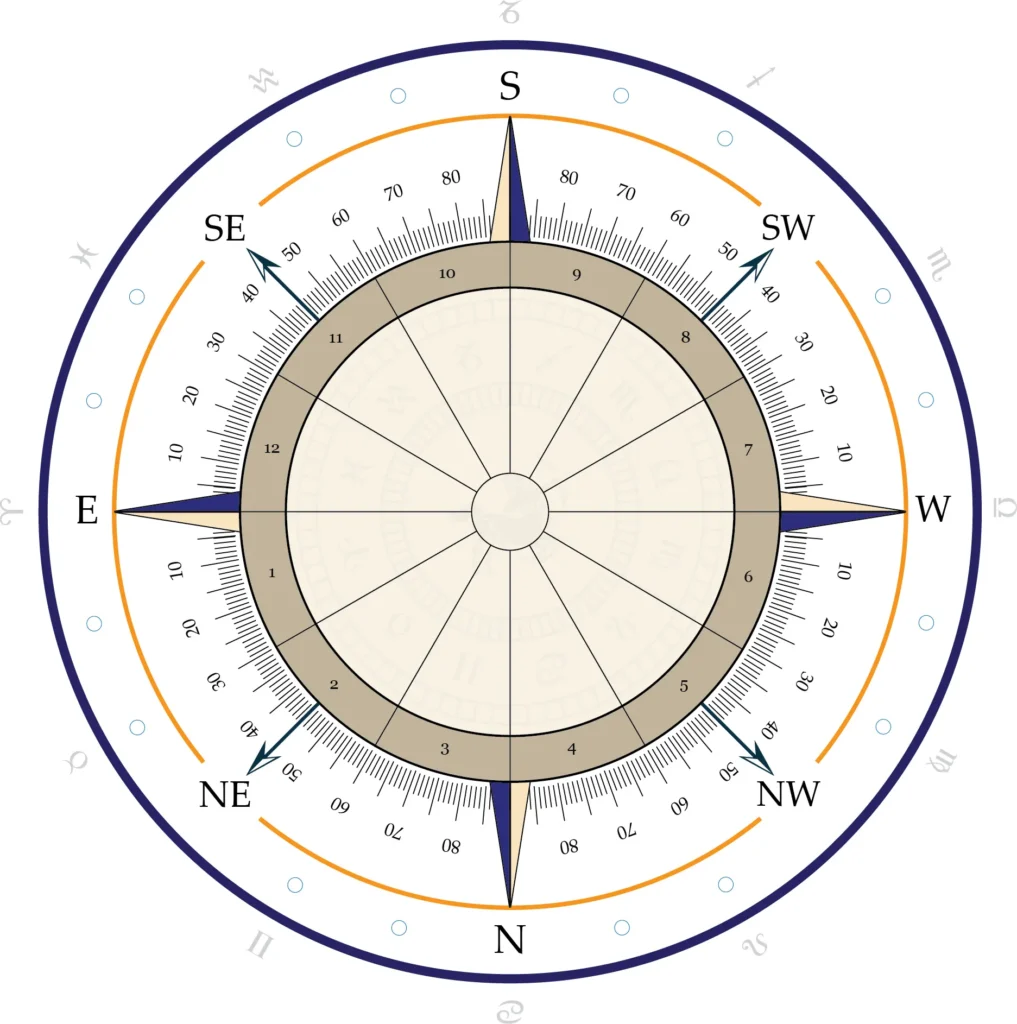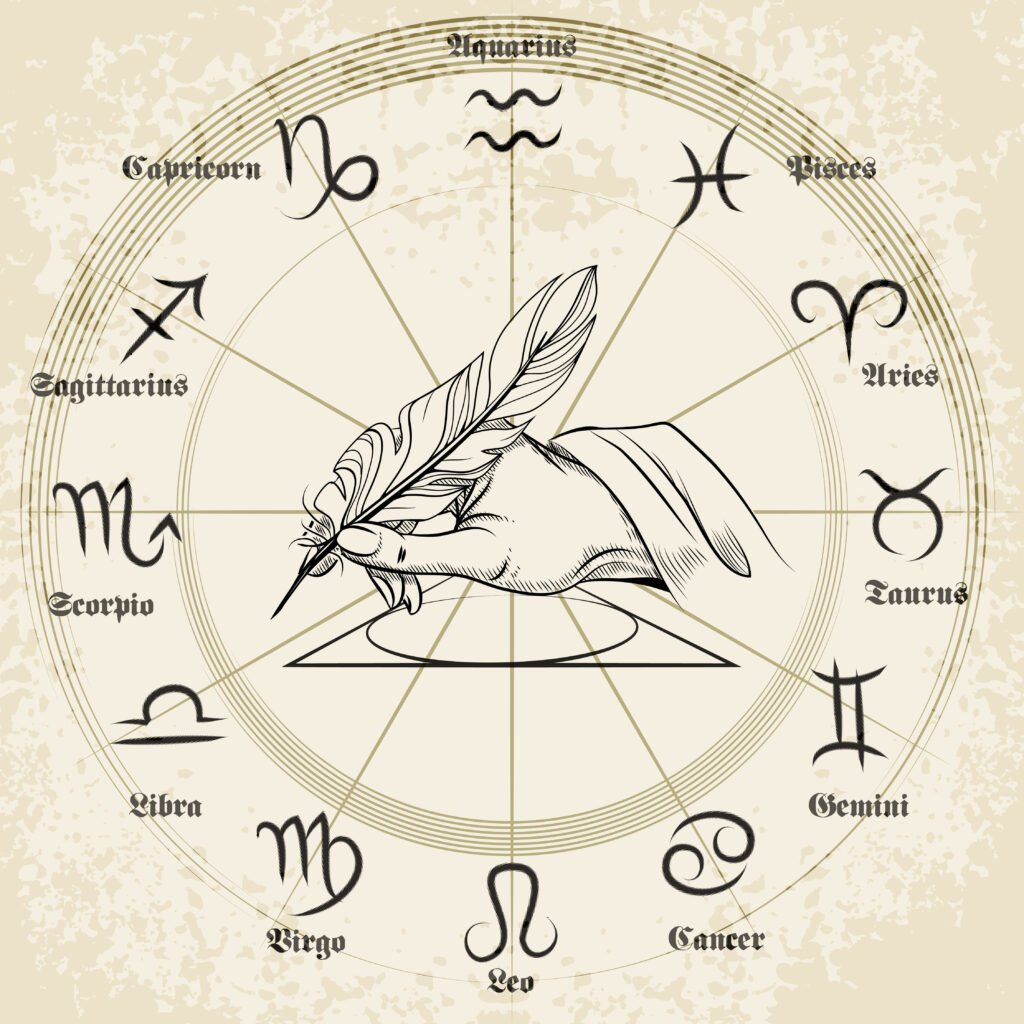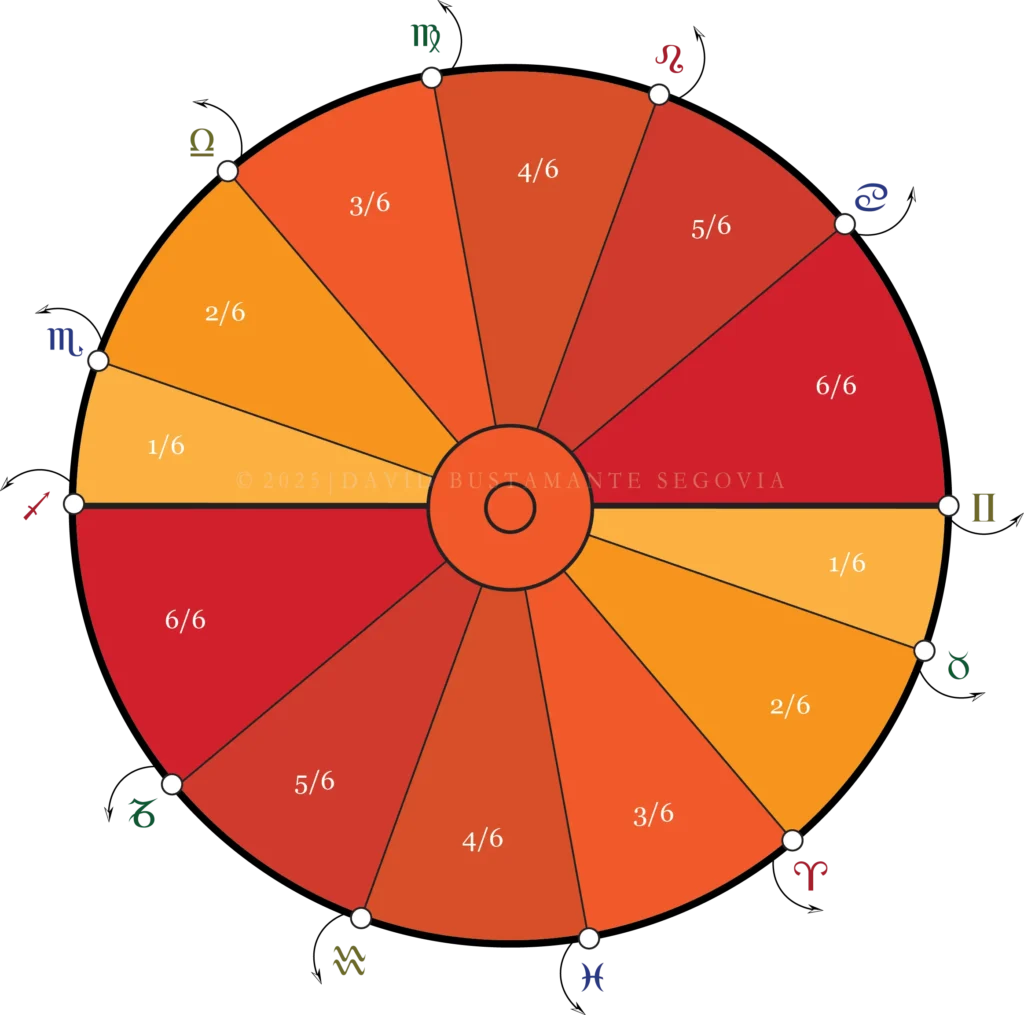
Incredibly Simple Explanation and Illustration of Placidus houses
Key concepts that may contribute to a full understanding of the four paragraphs that constitute or make up this publication: diurnal arc, seasonal or planetary hours, ascensional times, basic definition of Albert Einstein’s theory of relativity (i.e. the indissolubility of spacetime).
⦿ The Placidus mechanism of action prompts the astronomical engineer to repeatedly ponder or ask himself “Who’s turn is it now?” in at least five instances as he observes the celestial expanse above the horizon. That is, which next degree is poised to accomplish or complete one-sixth of its diurnal arc? This is due to the fact that each house cusp represents one-sixth (1/6) of the diurnal arc of, alone, that cuspal degree.
⦿ Therefore, the sky or celestial sphere visible above the horizon is partitioned into six segments of varying dimensions or six unequal parts, for we have followed six distinct seasonal times or temporal periods. In words even simpler, the principle by which we determine the ascensional degree (ASC) and the culminating degree (MC) in or of any natal chart—under any system of house division, be it quadrant or otherwise—is universally applied to all house cusps without a bias of any kind [1], said principle being diurnal displacement (i.e. the ascensional time of each point of our ecliptic, which is the same as the diurnal amount of time of the Sun when it occupied said degree at said latitude), irrespective of the position of the sun, that is, of the degree it occupies throughout the ecliptic (Zodiac) during the date and time of the birthchart in question.
Herein appears a simple illustration (created by us) of the method of house division that, even those who employ it, tend to not comprehend fully:
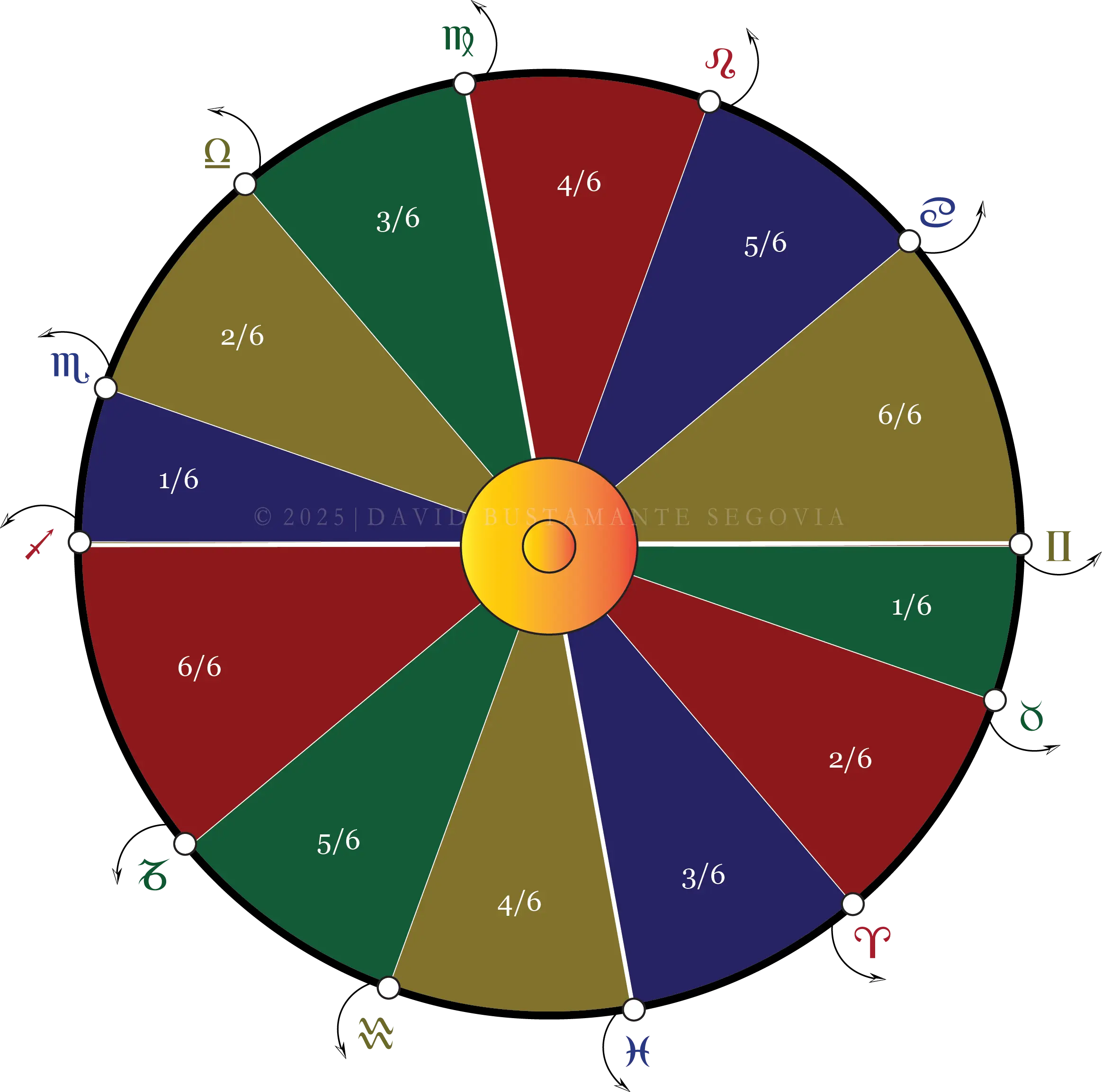
© David Bustamante Segovia (2025)
Should we measure the times of ascension from the eastern horizon line to the local meridian, three different trisections (of three different ascensional times) would have been produced, not just one, as in the case of Alcabitius (of the ascending degree) or Koch (of the culmination degree). Should we measure the times of ascension from the eastern horizon line to the western horizon line, six different hexasections (of six different ascensional times) would have been produced. Each cuspal degree therefore represents one-sixth of its diurnal arc, whereas from the point of view of the eastern horizon line, one, two, three, four, five, or six sixths of its diurnal arc (depending upon the cuspal degree in question).
⦿ The wheel presents the first, second, third, fourth, fifth, and sixth parts of the diurnal arc of six different signs (segments of the ecliptic), that is, six different ascensional times, for the principle according to which any method of house division distinguishes the ASC and the MC is applied universally for or to all house cusps. For the purpose of verifying this, (a) take any Placidus birthchart, (b) determine the duration of the diurnal arc of each of the six cuspal degrees that appear above the horizon, (c) divide this temporal length (i.e. it is the same as that of the diurnal arc of the sun when it occupied that point of the ecliptic at that latitude) into twelve equal parts (i.e. seasonal hours), and (d) advance or recede in time (i.e. relative to the time of the birthchart) each one-sixth of said diurnal arc (i.e. every two seasonal hours of that degree). One will be able to see, then, that said degree will appear at the cusp of the subsequent or preceding house, necessarily.
⦿ This is the essence of the method of house division conceived by Ptolemy in the second century, employed by Abraham ibn Ezra in the tenth century, and developed trigonometrically by Placidus de Titis in the seventeenth century thanks to the support of logarithms that birthed at the beginning of the same century together with him (Placidus de Titis). This calculation is the calculation of God, for it is the calculation of nature, not of man. By reflecting or respecting the laws of physics (i.e. atmospheric refraction, axial tilt, and Kepler’s second law of planetary motion, although not in orbital, but ascensional, terms), it transcends human constructs (e.g. prime vertical of Campanus; celestial equator of Regiomontanus) and adheres to the very order of the cosmos. One cannot conceive of a different method of house division.
David E. Bustamante
The Woodlands, TX
7 July 2025, 10:32 a.m.
______________________
[1] Campanus and Regiomontanus, for their part, confined the determination of seasonal or ascensional times solely to the Ascendant (ASC) and Midheaven (MC) degrees, while employing a geometric construct (great circles) that diverged from primary displacement (hourlines) with regard to the intermediate house cusps due to the difficulty that discerning the latter accurately without such constructs (prime vertical or celestial equator) would have represented at a time when spherical trigonometry was still in its nascent stages of development. These constructs made possible two different models of approximation, of which only Regiomontanus’s showed a closer adherence to primary displacement or motion (because the celestial equator, unlike Campanus’s prime vertical, also presents, like the ecliptic, tilt or inclination relative to the east and west points of the local horizon).
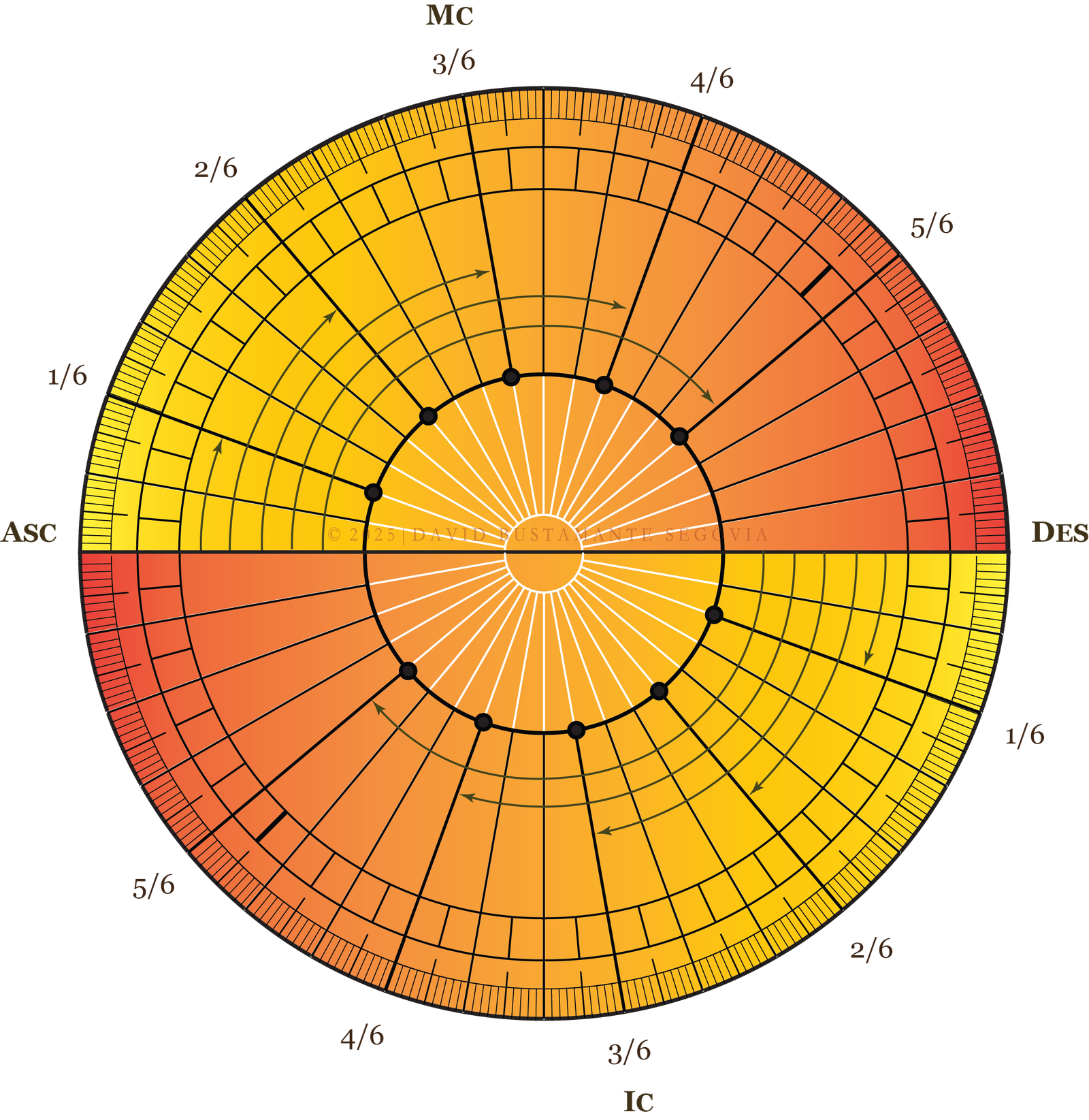
© David Bustamante Segovia (2025)
Related articles:
Placidus, Alcabitius, and Koch in a Nutshell
Curved lines versus rhumb lines
Placidean Mechanism of Action (relativity), Spacetime (Louis), and Hours (Mike/Houlding)
Placidus, Regiomontanus, Campanus. Space and Time, or Spacetime?
Placidus y el método de división de casas semiarco, según Mike Wackford
The Placidus Method Chewed
Have Holden, Rootjes, and Others Gotten it Right? Five Depictions

